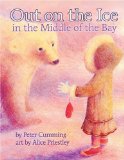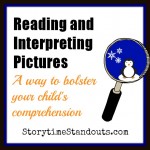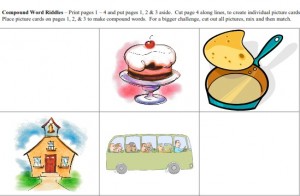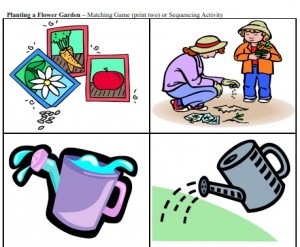Reading Comprehension

The development of comprehension skills can begin long before a child reads independently.
Comprehension is the most important skill in reading
Make Connections to Improve Reading Comprehension
We should encourage all preschool and older children to make connections between books and their own real-life experiences (a new baby in the house, having a ‘bad’ day), events (planning a birthday party, going to a zoo), people (going to the dentist) and places. The more understanding and information that children absorb when they are young, the better.
Parents should think about this when selecting books at the library and bookstore and should spend just a few minutes, before or after reading aloud, guiding children to think about ways their own experience are like (or different from) those in a story.
Retelling and Making Predictions Supports Reading Comprehension
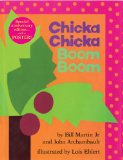
Before entering kindergarten, most children should be able to retell stories and make predictions Retelling could be as simple as telling the story of the Three Little Pigs at the dinner table or talking about Chicka Chicka Boom Boom in the car. Will the letters climb the tree again? Why do you think that?
Predictions can be made before, during or after enjoying a story.
- Looking at the cover art, Will this be a funny, sad or scary story?
- Partway through the story, What do you think will happen next? ,
- At the end of a book, What will Goldilocks do when she gets to her house?
With adult guidance, we can help children to connect stories to background experiences
We can ask a child,
- ‘Who was your favorite character in this picture book?’
- ‘Would you have gone into the three bears’ house if you were Goldilocks?’
- ‘Why were Cinderella’s stepsisters so mean to her?’
- ‘Which version of the Gingerbread Boy did you like best?’
Enjoying wordless picture books with your child can help support reading comprehension
Wordless picture books like Pat Schories’ Breakfast for Jack (Jack’s Books) and Peter Sis’ Dinosaur!, rely entirely on pictures to tell a story. These books encourage vocabulary development and ‘reading the illustrations.’
When sharing a wordless picture book, give your child an opportunity to look through the entire book. He should check out each picture in order to gain an understanding of how all the pictures work together to tell the story. Then, encourage your child to ‘read’ the book with you.
As well, books that provide word clues encourage children to think about the clue and solve a puzzle
Many lift-the-flap books include word clues for you to read and your child to decipher. In Who’s Under That Hat? (Gulliver Books) David Carter asks, ‘Bright blue feathers, sharp shiny beak. If you give me a cracker, I just might speak. Who’s under the BLACK hat?’ Enjoying a book like this with your child will encourage her to listen carefully to the word clues, look at the picture clues and solve the riddles. Gain listening and comprehension skills while solving riddles!
Make predictions and, go ahead, judge a book by its cover!

Before opening the cover of a book we often reach judgments about what we will find inside. Of course, we do the same thing with magazines, movies, and websites. The next time you visit the library, choose one or two or more new books with interesting covers. When you get home ask your child to predict whether the stories will be funny, scary, silly or sad. Take a look at the cover of Winnie’s Magic Wand by Korky Paul and Valerie Thomas or Out on the Ice in the Middle of the Bay by Peter Cumming. Both covers are fascinating and both books lend themselves nicely to making predictions. What will happen when Winnie tries to use her just-washed wand? Will Baby Nonook and Little Leah meet on the ice?
Remember that just a few extra minutes spent talking about a book will help your child learn to retell stories, make predictions and connect stories with his own experiences.
Storytime Standouts posts about reading comprehension
Free Reading Comprehension Printables
Reading Comprehension Printable Activity – Compound Word Riddles
Free Printable Comprehension Activities – Sequencing
Building a Snowman Sequencing Activity
 Building a Snowman Sequencing Activity
Building a Snowman Sequencing Activity
Planting a Garden Sequencing Activity
 Planting a Flower Garden Sequencing Activity
Planting a Flower Garden Sequencing Activity
Making a Valentine Sequencing Activity
 Valentine's Day Sequencing Activity
Valentine's Day Sequencing Activity
Cut this Valentine's Day Sequencing Activity apart and have children put it together in the correct order or print two and use as a matching game.




